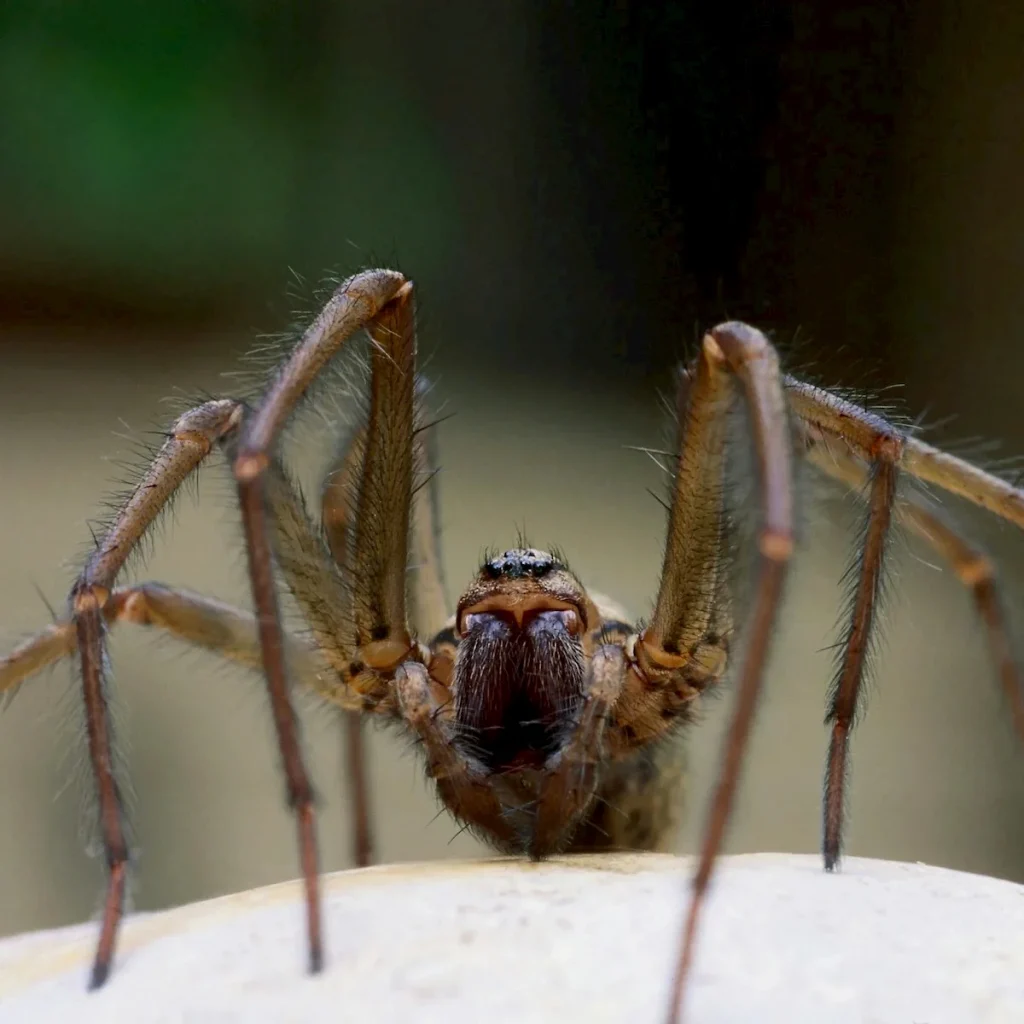Missouri has diverse spider species, each with unique characteristics and behaviors.
Understanding these common spiders can help you identify them and appreciate their role in the ecosystem. This article will explore some of Missouri’s most frequently encountered spiders, providing detailed descriptions and identification tips for each.

Types of Spiders Found in Missouri
Explore our guide to the common spiders of Missouri. Learn to identify Black Widows, Brown Recluses, Wolf Spiders, Garden Spiders, and Jumping Spiders. Gain insights into their habitats, behaviors, and potential dangers:
Black Widow
- Identification:
- Appearance: The female black widow is shiny black with a distinctive red hourglass shape on the underside of her abdomen. Males are smaller and lighter in color, with white and red markings.
- Size: Females are about 1.5 inches (38 mm) long, including the leg span. Males are significantly smaller.
- Characteristics:
- Habitat: Black widows prefer dark, undisturbed areas such as woodpiles, sheds, basements, and crawl spaces.
- Behavior: They are solitary and nocturnal, typically hiding during the day and coming out at night to build irregular, tangled webs.
- Danger: The bite of a female black widow can be medically significant, causing severe pain, muscle cramps, and other symptoms. However, fatalities are rare.
Brown Recluse
- Identification
- Appearance: Brown recluse spiders are light to dark brown with a characteristic dark violin-shaped marking on their back.
- Size: They measure about 0.5 to 1 inch (12 to 25 mm) in length, including the legs.
- Characteristics
- Habitat: They favor secluded, dry, and undisturbed areas such as attics, closets, and inside shoes or clothing stored away.
- Behavior: Brown recluses are shy and reclusive, avoiding human contact. They build irregular webs in undisturbed areas.
- Danger: Their bite can cause necrotic lesions and systemic symptoms. If bitten, immediate medical attention is recommended.
Wolf Spider
- Identification
- Appearance: Wolf spiders are usually brown to gray with distinct stripes or markings on their bodies.
- Size: They range from 0.25 to 1.2 inches (6 to 30 mm) in length.
- Characteristics
- Habitat: These spiders do not build webs. Instead, they are ground dwellers, often found in leaf litter, grassy areas, and sometimes inside homes.
- Behavior: Wolf spiders are solitary hunters who are active at night. They use their keen eyesight to hunt and capture prey.
- Danger: They are generally not aggressive, and their bite is not harmful to humans but can cause mild irritation.
Garden Spider
- Identification
- Appearance: These black and yellow garden spiders are easily recognizable by their striking black and yellow marks on the abdomen.
- Size: Females can grow up to 1.5 inches (38 mm), while males are smaller, around 0.5 inches (12 mm).
- Characteristics
- Habitat: They are commonly found in gardens, fields, and other vegetation-rich areas.
- Behavior: Garden spiders are known for their large, orb-shaped webs, which they build in open areas to catch flying insects.
- Danger: They are harmless to humans and beneficial for controlling pest insect populations.
Jumping Spider
- Identification
- Appearance: Jumping spiders are small and stocky with short legs. They have a variety of colors and patterns, often with iridescent markings.
- Size: Typically around 0.1 to 0.7 inches (2.5 to 18 mm) in length.
- Characteristics
- Habitat: They can be found anywhere, including forests, grasslands, gardens, and even inside homes.
- Behavior: Known for their excellent vision and jumping ability, these spiders actively hunt and pounce on their prey rather than build webs.
- Danger: They are harmless to humans and rarely bite unless provoked.
Take Action
Understanding the common spiders of Missouri can help demystify these fascinating creatures and reduce unnecessary fear. While some spiders, like the black widow and brown recluse, require caution and respect due to their venomous bites, most spiders pose no significant threat to humans and play vital roles in controlling pest populations. By recognizing and appreciating these common spiders, you can foster a more harmonious coexistence with these essential members of our ecosystem.
For more information on pest control and spider management, contact Titan Pest & Wildlife Solutions. Our experts help you maintain a safe and comfortable living environment.

